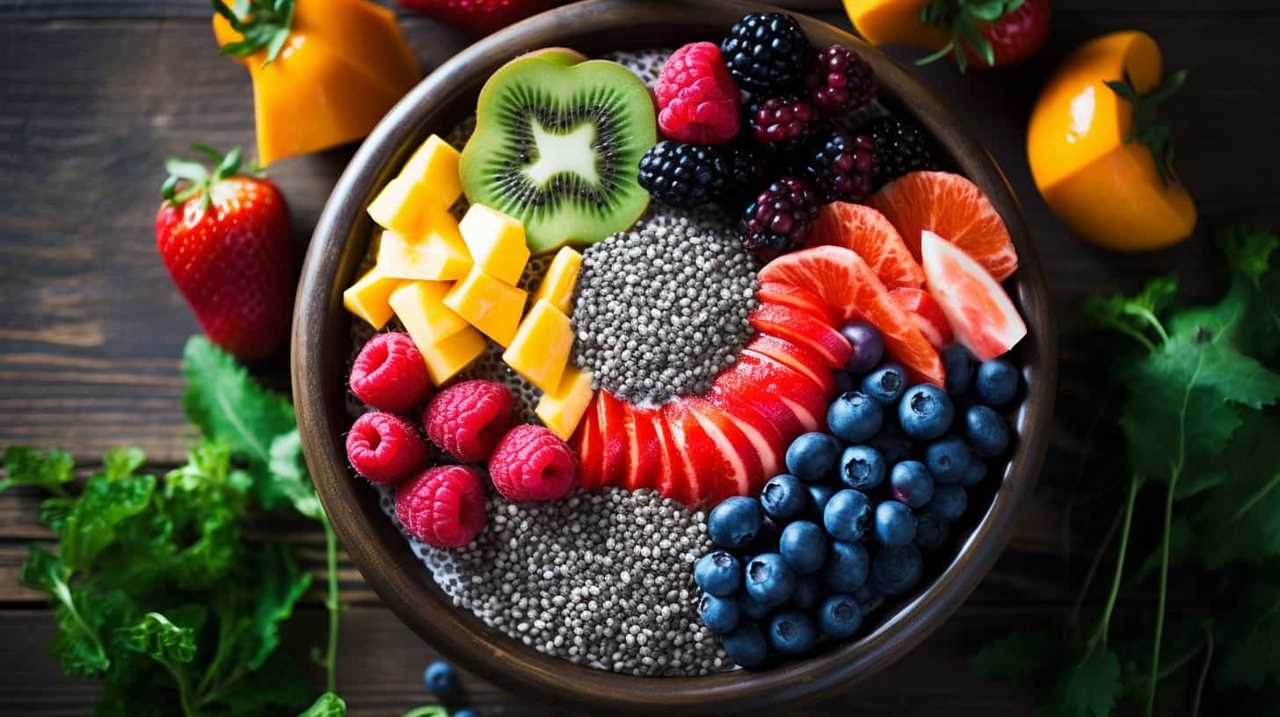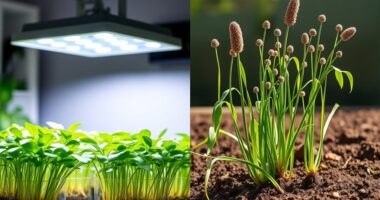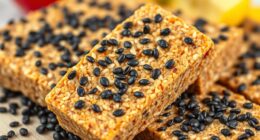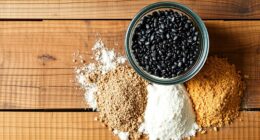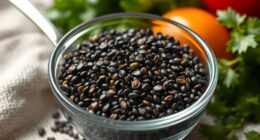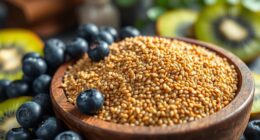Searching for top-quality chia seeds on the internet? Look no further! This article will present our chosen picks for the finest organic, gluten-free, and affordable options in chia seed brands.
With their numerous health benefits, chia seeds are a must-have addition to any diet. But with so many options out there, it can be overwhelming to find the right ones. Don’t worry, we’ve done the research for you, so you can make an informed decision and start enjoying the benefits of these nutritious seeds.
Let’s dive in!
Key Takeaways
- Chia seeds are a rich source of fiber, omega-3 fatty acids, antioxidants, vitamins, and minerals.
- When buying chia seeds online, it is important to look for organic options that are free from pesticides and chemicals.
- It is advisable to choose reputable brands or sellers and read customer reviews and ratings.
- There are budget-friendly options available, such as Bob’s Red Mill and Nutiva, which offer high-quality chia seeds at reasonable prices.
Health Benefits of Chia Seeds
In our search for the best chia seeds online, we discovered the numerous health benefits of consuming chia seeds.

Chia seeds aren’t only delicious but also packed with essential nutrients that can greatly benefit our overall health. These tiny seeds are a rich source of fiber, omega-3 fatty acids, antioxidants, and various vitamins and minerals. Incorporating chia seeds into our diet can help improve digestion, promote heart health, and boost our immune system.
Additionally, chia seeds are incredibly versatile and can be used in a variety of recipes, such as smoothies, puddings, and baked goods.
Now that we understand the nutritional profile and health benefits of chia seeds, let’s explore the top factors to consider when buying chia seeds.
Top Factors to Consider When Buying Chia Seeds
When buying chia seeds online, we should consider several key factors.
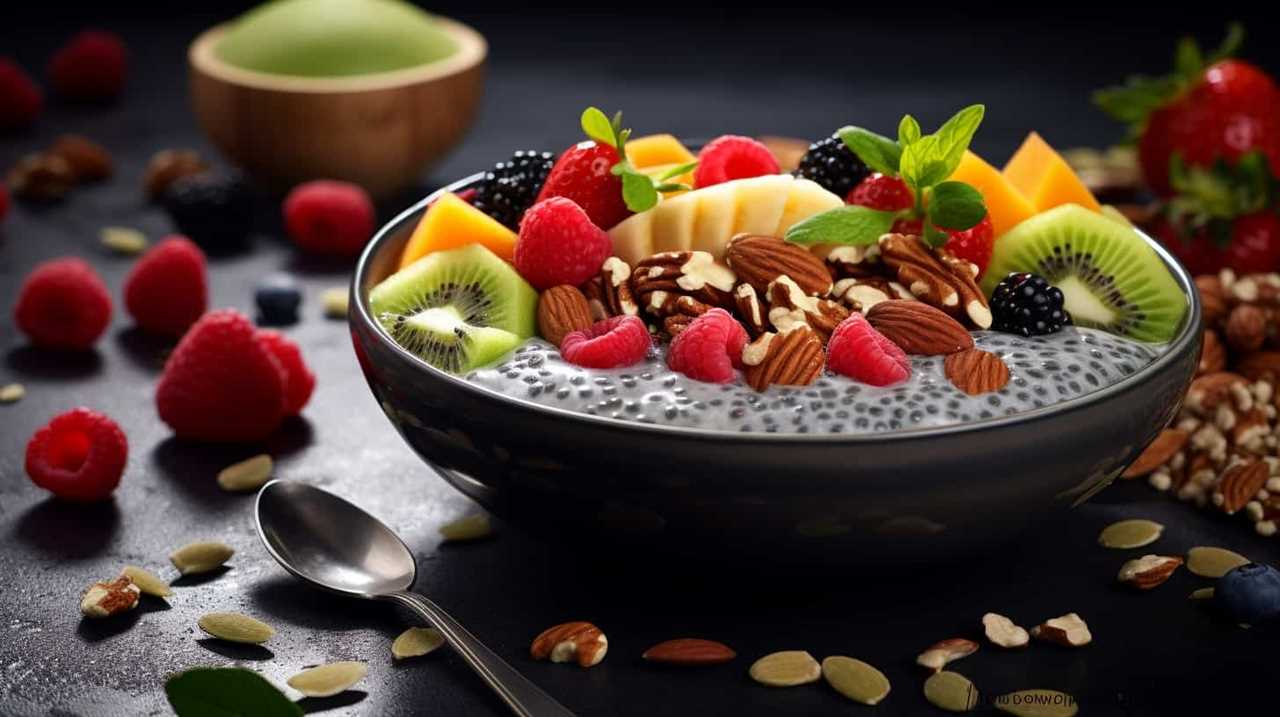
Firstly, it’s important to look for organic chia seeds that are free from pesticides and chemicals. This ensures that we’re consuming a high-quality product that’s safe for consumption.
Secondly, we should consider the source of the chia seeds and choose a reputable brand or seller. This guarantees that we’re getting authentic chia seeds that aren’t mixed with any other substances.
Lastly, it’s helpful to read customer reviews and ratings to gauge the quality and freshness of the chia seeds.
Additionally, when buying chia seeds online, it’s useful to look for websites that provide chia seed recipes and storage tips to make the most of our purchase.
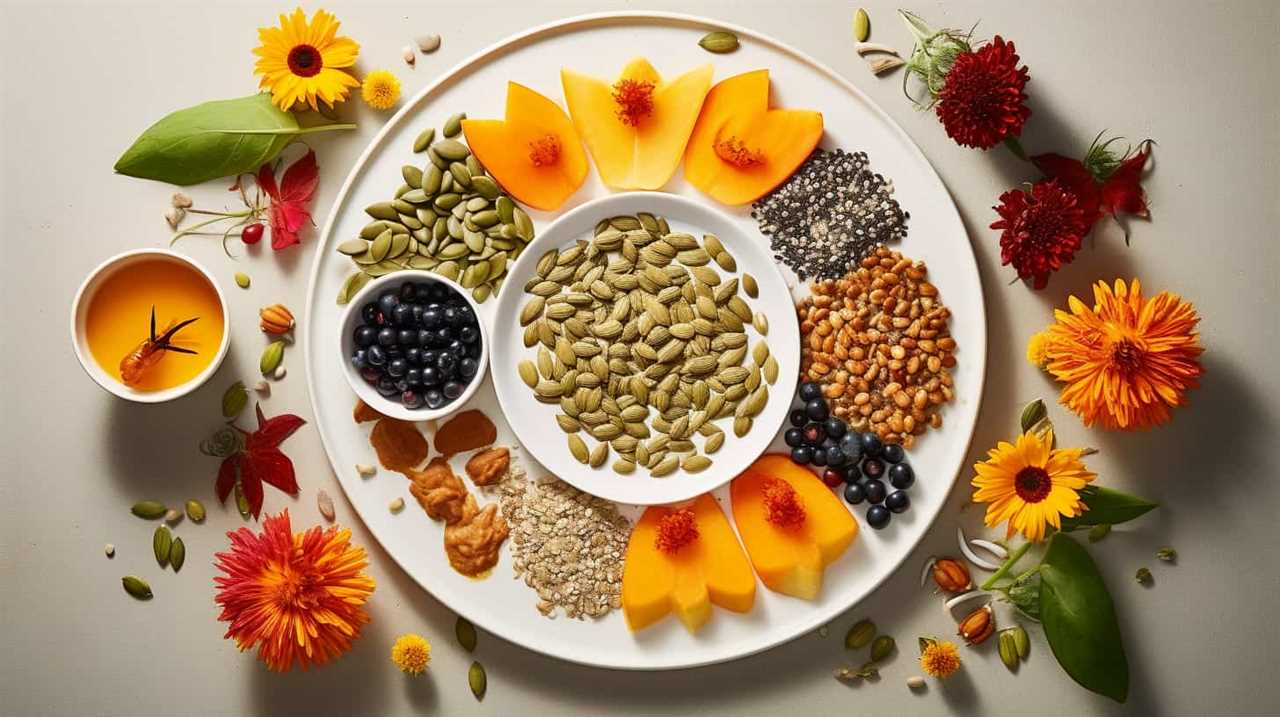
Best Organic Chia Seed Brands Online
After considering the top factors to look for when buying chia seeds online, we can now explore the best organic chia seed brands available.
When it comes to organic chia seeds, it’s important to choose brands that prioritize quality and sustainability. Two top organic chia seed brands that meet these criteria are Nutiva and Navitas Organics.
Nutiva offers organic chia seeds that are rich in omega-3 fatty acids and fiber, making them a nutritious addition to your diet.
Navitas Organics also provides high-quality organic chia seeds that are packed with essential nutrients and can be used in a variety of chia seed recipes.

Both brands are committed to providing chia seeds that aren’t only organic but also have a high chia seed nutritional value.
Now, let’s move on to discussing the top gluten-free chia seed options to buy.
Top Gluten-Free Chia Seed Options to Buy
Let’s explore the top gluten-free chia seed options available for purchase.
When it comes to chia seed recipes, having gluten-free options is essential for individuals with dietary restrictions. One highly recommended brand is Bob’s Red Mill, offering gluten-free chia seeds that are packed with nutrients and can be used in various recipes.
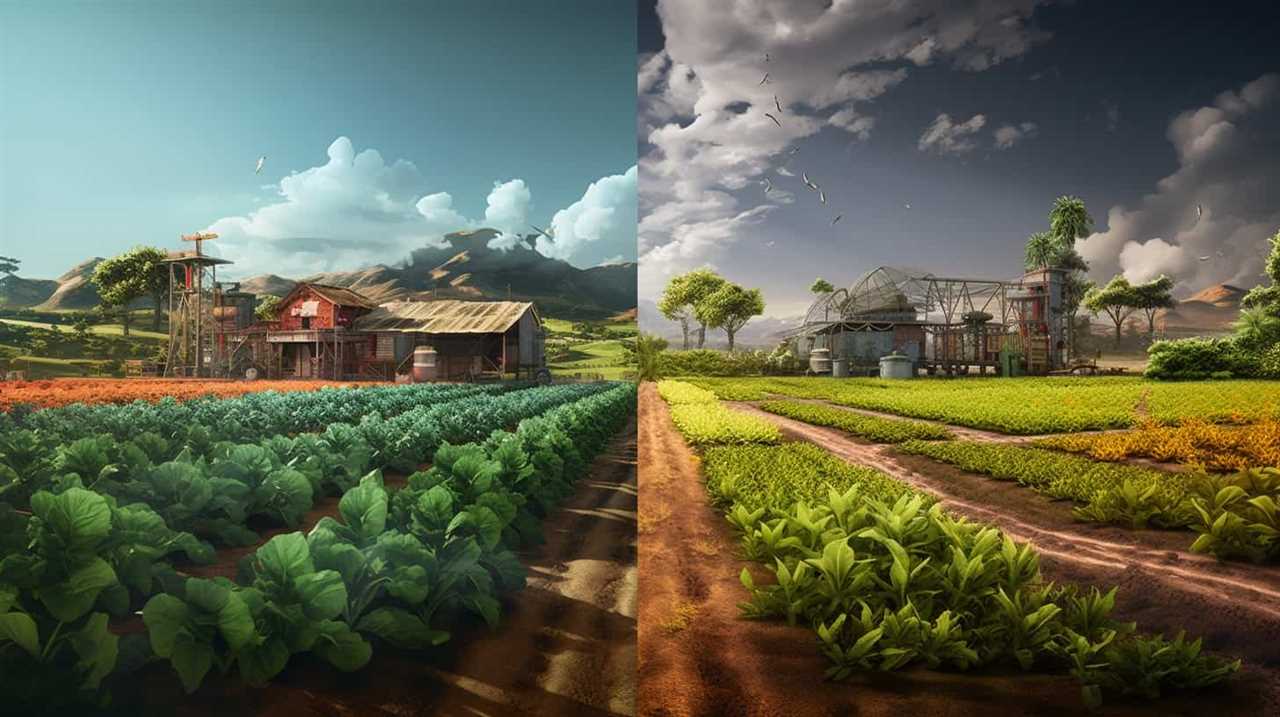
Another great option is Nutiva, which provides organic, gluten-free chia seeds that are rich in omega-3 fatty acids.
If you’re looking for unique flavors, The Chia Co offers gluten-free chia seeds in flavors like mango, banana, and blueberry. These flavors can be used to create delicious chia seed pudding, adding a burst of flavor to your healthy snack.
With these top gluten-free chia seed options, you can enjoy all the benefits of this superfood while catering to your dietary needs.
Budget-Friendly Chia Seed Brands for Every Wallet
Now, let’s delve into our recommended budget-friendly chia seed brands that cater to every wallet.

When it comes to affordable chia seed options, there are several brands that offer great deals and discounts.
One such brand is Bob’s Red Mill, known for their high-quality chia seeds at reasonable prices. They often have promotions and discounts available, making them a popular choice for those on a budget.
Another budget-friendly option is Nutiva, which offers organic chia seeds at affordable prices. They frequently have sales and discounts, making it easier for everyone to enjoy the benefits of chia seeds without breaking the bank.
Frequently Asked Questions
Are Chia Seeds Safe for People With Nut Allergies?
Chia seeds are generally safe for people with nut allergies. However, it’s always best to consult with a healthcare professional to ensure individual safety. Chia seeds are known for their heart and digestive health benefits.
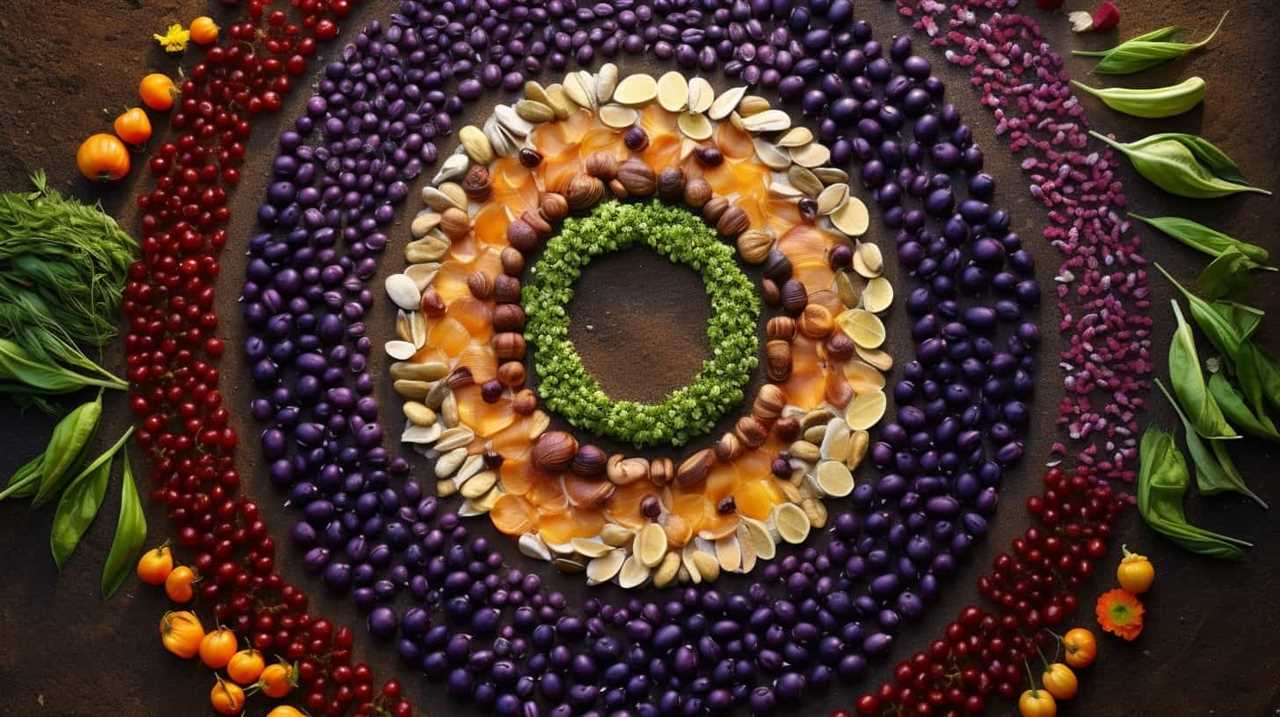
Can Chia Seeds Be Used as a Replacement for Eggs in Baking?
Yes, chia seeds can be used as a replacement for eggs in baking. They act as a binding agent and add moisture to the recipe. Try adding them to smoothies or making chia seed pudding recipes.
How Should Chia Seeds Be Stored to Maintain Freshness?
To maintain freshness, store chia seeds in an airtight container in a cool, dry place. Avoid exposure to heat, moisture, and sunlight. Properly stored chia seeds can maintain their freshness for up to two years.
Can Chia Seeds Help With Weight Loss?
Chia seeds can support weight loss by promoting digestive health and helping to control blood sugar levels. Incorporating chia seeds into a balanced diet can be a beneficial strategy for those looking to manage their weight.
Are There Any Potential Side Effects of Consuming Chia Seeds?
There are potential side effects of consuming chia seeds, such as digestive issues or allergic reactions. However, when consumed in moderation, chia seeds offer numerous health benefits. The recommended daily intake is around 1-2 tablespoons.
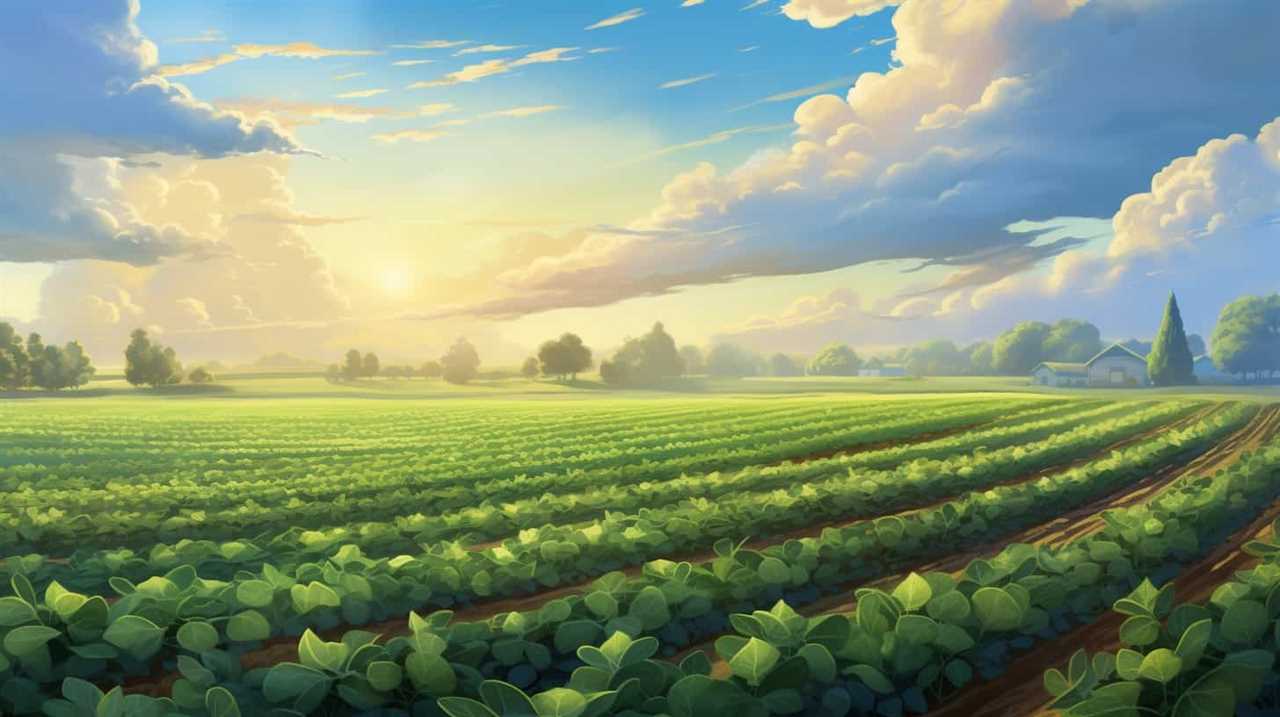
Conclusion
After exploring the health benefits and various options available, it’s clear that chia seeds are a versatile and nutritious addition to any diet. Whether you’re looking for organic or gluten-free options, there are plenty of reputable brands to choose from.
And the best part? Chia seeds won’t break the bank, with budget-friendly brands available for every wallet.
So go ahead, stock up on these little powerhouses and enjoy the many benefits they’ve to offer.

